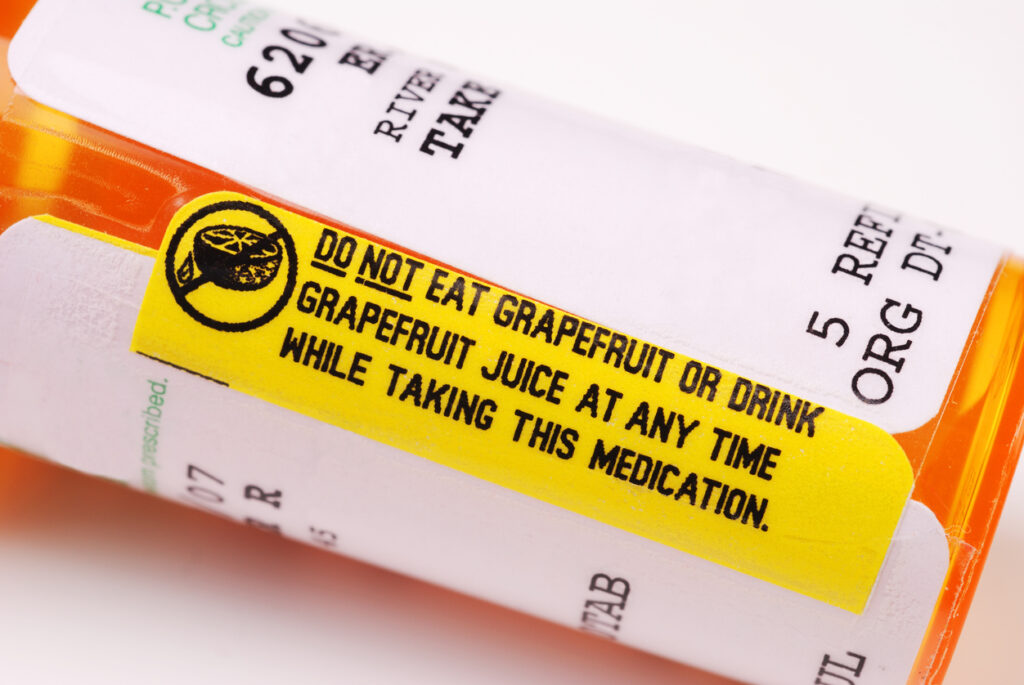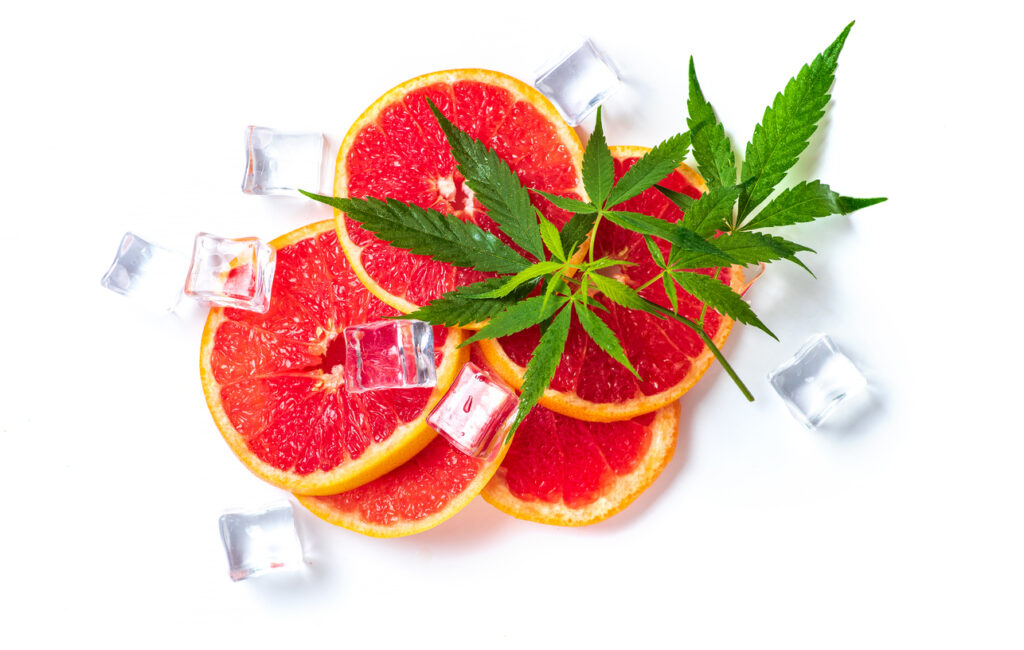Free shipping for orders over $100.00
Menu
Menu

Are there any Drug Interactions with CBD?
While CBD is safe for general consumption, there are some drug interactions that you should know about before beginning your cannabinoid journey. We will cover some of the main interactions here (including lists of the most common mild to severe drug interactions), however it is important that you consult with your doctor if you are taking any medications.
Have you ever noticed a grapefruit warning on any of your medications?
In this article we’ll explain the science behind the grapefruit and other warnings and how it relates to cannabinoids.
How does grapefruit affect my body’s ability to break down medication?
First, let’s take a basic look at how drugs are broken down in our bodies. Prescription drugs move through our bodies and end up in the liver to be broken down. A group of enzymes called Cytochromes P450 (CYPS), which are mainly found in the mitochondria of liver cells, work to metabolize harmful toxins and detoxify medications.

Unfortunately, the speed at which the drugs are broken down is dependent on our genetic variability, our lifestyle as well as our diet and supplements we take. These differences determine how quickly or slowly a drug is metabolized. With a slow metabolism, the drug stays in our body longer and can create potential toxicity and side effects. Consequently, with a faster metabolism, the drug could be less effective or the impact of the drug might not last as long as expected.
Foods like grapefruit and other citrus fruits contain a molecule called flavonol, which slows down the enzymes and the metabolism of the drug, therefore making the drug stronger and allowing it to stay in your body longer. Other foods like charcoal-grilled foods and green leaf vegetables (including cabbage and broccoli) as well as activities like smoking can weaken the effects of the drug by activating the enzymes and consequently speeding up the drug metabolism and reducing the drug levels in our body.
In addition to these variations that can impact drug metabolism, it’s important to understand how prescription drug doses are typically calculated. Generally, in western medicine, doctors base the dosing formula of prescription drugs mainly on our weight, height, age or kidney function. However, the multitude of variables in addition to these means it’s extremely complicated to establish the correct dose for every individual.
“It’s estimated that somewhere between 30 and 40 percent of the drugs people take do nothing for them. Yet people rarely consider whether their dose could be wrong.”
JOSEPH GUGLIELMO, PHARMD Dean, UCSF School of Pharmacy


Traditionally, many drugs were tested only on men in the 40 year age group because women’s fluctuating hormones made them too inconsistent in drug responses, thus they were often excluded in controlled studies for testing drugs. Because of this, women were more likely to suffer adverse effects from approved prescription drugs. For example, from 1997 to 2001 10 prescription drugs were removed from the market, 8 of which carried higher risks for women than for men.
Today, even though government-funded studies on humans must legally include women, many researchers don’t analyse the data by gender differences, which hinders accurate analysis. “If you’re clumping men and women together in your study and there truly is a sex difference, you’re not just harming the women; you’re harming the men.” Larry Cahill, Professor, Neurobiology and Behavior at the University of California, Irvine. [2]
Next time you take prescription drugs, remember that the recommended dose might have been tested on 40 year old men. Keep in mind that all of your variables (age, weight, sex, lifestyle, diet, genetics etc.) can have an impact on your dose. This is just as true for cannabinoids as it is for prescription medications.

What’s the connection between the grapefruit warning and CBD?
Like medications, CBD and other cannabinoids pass through the liver and are being processed by the same CYPS enzymes. That means any medication that is affected by grapefruit, would be competing for the same enzyme resources as CBD. So taking CBD at the same time as those medications could alter the strength of the dose or the length of time the medication remains in your system. In order to not overload the liver, we need to give our CYPS enzymes time to replenish.
Even if you’re taking medication that has the grapefruit warning, that doesn’t necessarily mean that you cannot take cannabinoids. It might be possible to create a dosing schedule that works with both your medications and cannabinoids. Check with a doctor who has experience working with CBD to see if your medication is still compatible with cannabinoids.
So, which medications interact negatively with CBD use?
The Pennsylvania State University, College of Medicine created a list with a range of medicines, that strongly interact with CBD and other cannabinoids, including antidepressants (such as amitriptyline, clomipramine, and lofepramine); oral contraceptives (ethinylestradiol); opioid pain medications (fentanyl); thyroid hormones (levothyroxine); sedatives (propofol); and blood thinners (acenocoumarol and warfarin).
The full list of medications is available at the Penn State website. The margin between therapeutic and toxic is quite small, therefore the interaction increases the effects of these drugs and it can become a real medical concern. There is another list of 139 medicines, where the risk of cannabinoid interactions are much lower.
If you are taking medications and would like to further explore cannabinoid therapy, prepare the following before your next visit with your health care professional:
If you do all that, you’ll be better informed and ready to open up a frank conversation about your interest in cannabinoid use.


FDA Disclaimer: The statements made regarding these products have not been evaluated by the Food and Drug Administration. The efficacy of these products has not been confirmed by FDA-approved research. These products are not intended to diagnose, treat, cure or prevent any disease. All information presented here is not meant as a substitute for or alternative to information from healthcare practitioners. Please consult your healthcare professional about potential interactions or other possible complications before using any product. The Federal Food, Drug, and Cosmetic Act requires this notice.
Copyright © 2023 Great Karma LLC – All Rights Reserved. | Privacy Policy | Terms & Conditions | Shipping & Return Policy | Accessibility Statement